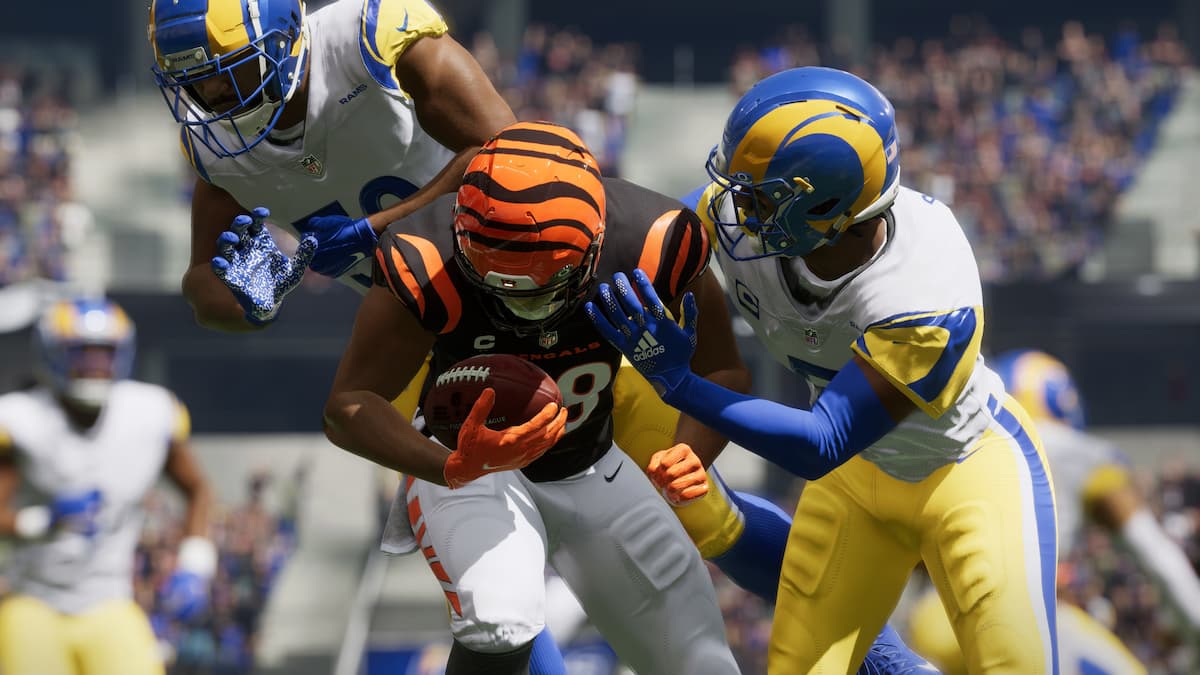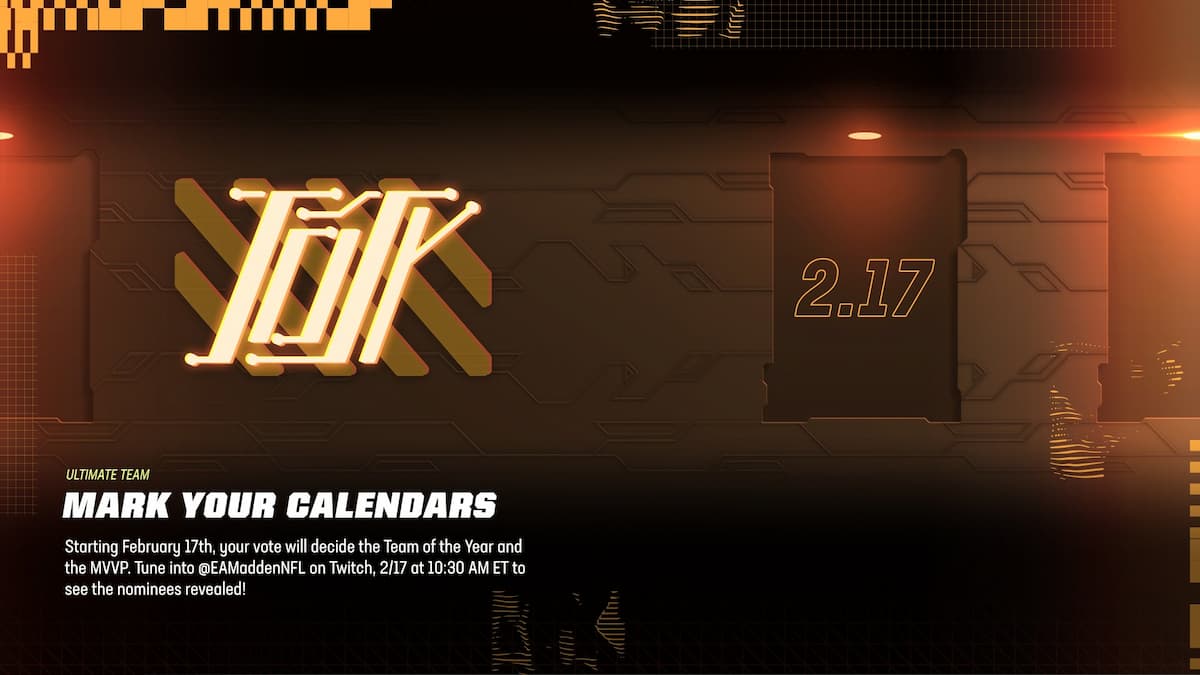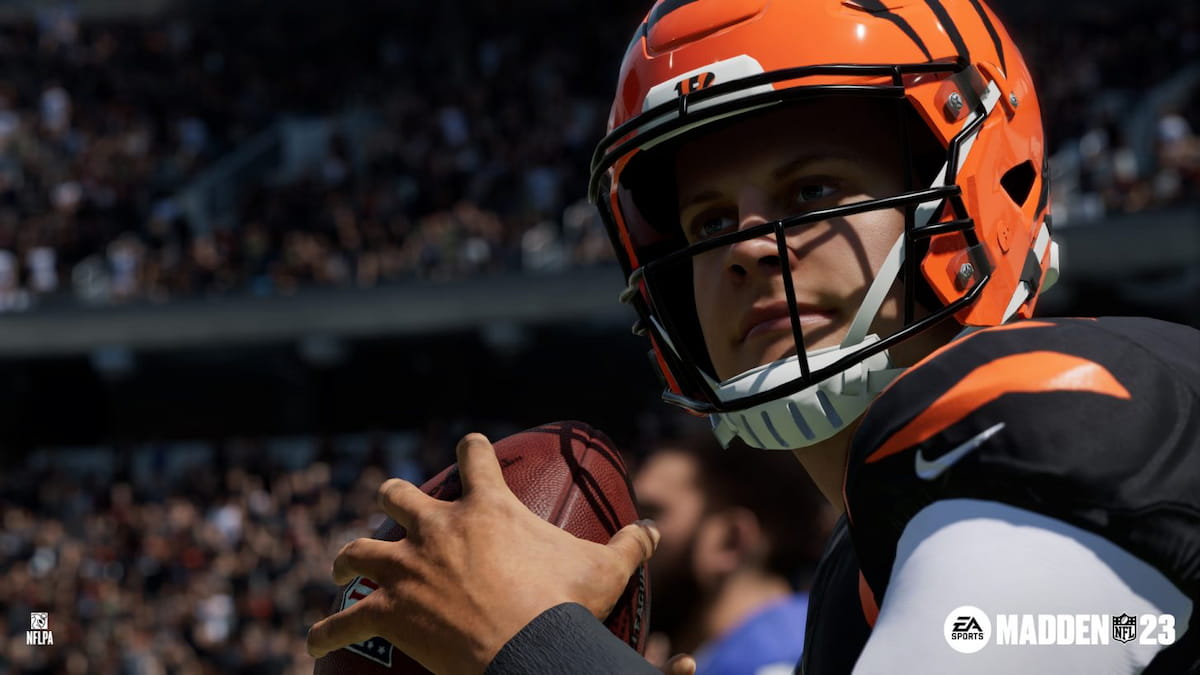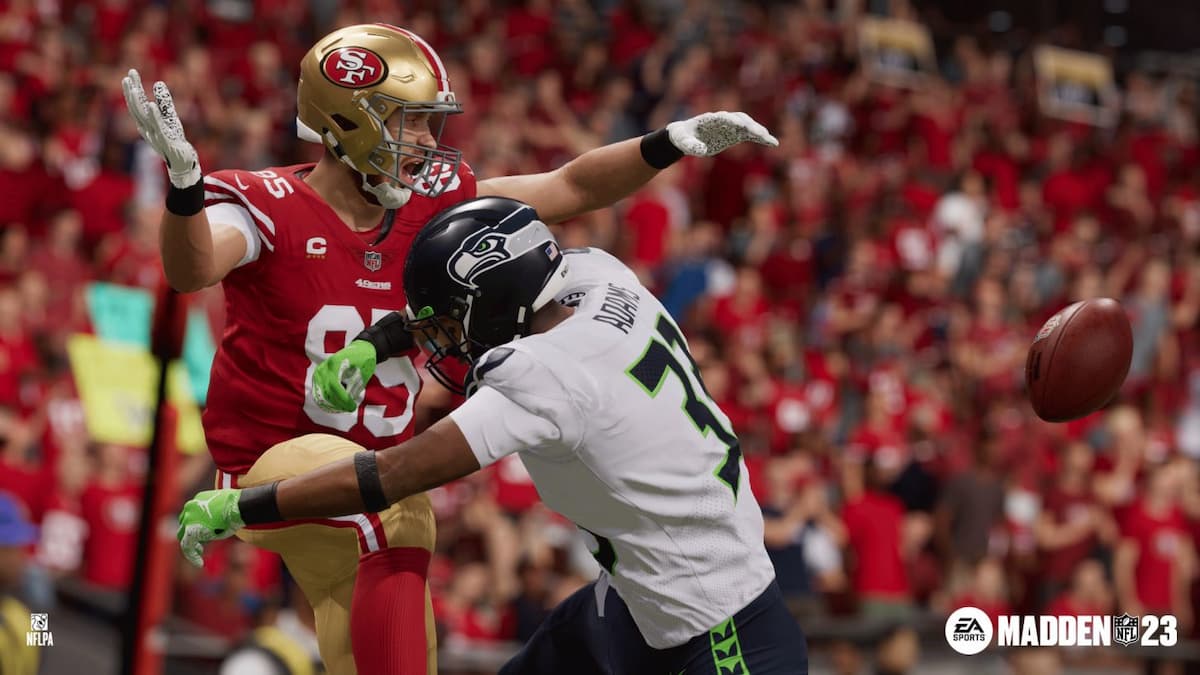Throughout the promotion of this year’s Madden game, Madden 23, the tagline has been this: Play Like Mad. It’s fitting, given that Madden 23, from the cover to the features, seemed to be tailored toward honoring the namesake of the franchise, the late Hall of Fame coach John Madden. Outside of features that were specifically designed to give Madden his much-deserved due, EA Sports certainly talked the talk. The publisher and developer touted that this year’s game would feature a number of game-changing features, and be “the most polished” Madden game in years.
After playing Madden and its various game modes over the first days of launch, it still feels like the franchise is missing something. And that’s not good, given what the competition is doing.
Does Fieldsense make sense?

Madden 23’s gameplay has been in somewhat of a quandary over the past few years. Since the installment of the Frostbite engine, it’s seemed that the franchise’s hallmark has been marred by clunky animations, an easily exploitable AI, and a funky product that just hasn’t felt like a true football simulation.
This year, EA Sports touted a number of new additions. The insertion of Fieldsense, a “physics-informed animation and animation-branching technology,” was a marquee promotional point for the franchise during the summer. This new system has been added to work in tandem with the Frostbite engine, with the intended purpose of making Madden more fluid, and less animation-heavy than it has been in the past. In terms of mechanics, 360° Cuts have been added to make ball carriers cut and move with more explosiveness. Skill-Based Passing is another notable addition, giving players more ability to influence not just the receiver, but also exactly where the ball winds up, all while adding a visual feedback meter for power on throws.
360° Cuts and Skill-Based Passing are solid additions, for a few reasons. The new passing mechanic does take away some of the RNG algorithms out of the way, allowing users to have more of an influence on making plays. And, having hard cuts does make for a much more challenging defense, as it is easier to change direction and allows ball carriers to not be as stiff as in the past.
Nonetheless, much of what has been in place over the past few years is still here for Madden 23. Madden is still animation-heavy, despite the changes made via Fieldsense. Offensive line blocking still boggles the mind, as it feels like every game features several sequences where a blitzing defender just gets completely ignored by a lineman. And speaking of returning features, the Momentum system is back for Madden 23. Like last year, there are still too many times where losing teams that are on the brink of falling even further behind just seem to have too much Momentum on their side.
An access pass to MUT

Madden Ultimate Team (MUT) is back, but with a new wrinkle. That is thanks to the addition of Field Pass, a system that is akin to the Ultimate Seasons that were in place for Madden 22. However, this concept has been expanded much further and is one that should benefit free-to-play MUT users.
The concept of Field Pass is simple: play games and challenges in Madden, and accumulate stats and accrue XP toward the pass. There are a number of different field passes, ranging from Seasons that re-start every other month to Competitive Field Pass that revolves around Solo Battles, Head-to-Head Seasons, and the new MUT Champions to even program-themed ones. Each pass offers Coin rewards, as well as jerseys, Strategy items, and high OVR players that can be added to teams.
This new system gets a couple of things very right. In order to get players into MUT, there needs to be some sort of incentive, especially for those who are very reluctant to pay real money for Points. Over the past few years, it was extremely tough to get much of anything for playing challenges and House Rules, but with the new system, it has more meaning and doesn’t feel like a total pay-to-win system. Giving players a real chance to build a team with minimal investment should pay off in the long run, so long as EA sticks to this plan of rewarding players for simply playing MUT.
It’s theoretically a positive direction for EA to take with MUT. Still, problems remain in Madden’s signature game mode. Slow menu screens, set issues, and a failure to record points toward the field passes has been a very real thing over the first few days of Madden 23, and are problems that have to be addressed.
Everything else

Face of the Franchise (FOTF) and The Yard are back for Madden 23, with the two being linked to one another. Much like in prior games, players are tasked with creating an avatar that can be used for playing in both modes. Players can customize the physical loadout, as well as the attributes via Skill Points.
FOTF also looks a bit different, as this year’s game does not deal as much with storylines and cutscenes, but rather with optional Side Activities that can boost your player’s profile and attributes. However, Face of the Franchise, in the fourth year of its existence, still does not offer players to choose from all the positions that the sport has to offer. And even then, it fails to be as comprehensive as the Superstar mode from much older Madden releases.
Franchise Mode received a substantial upgrade last year, one that did come a bit later than originally expected. EA Sports touted more upgrades to Franchise Mode for Madden 23, with motivations — another feature that had been in Madden games in the past — for players in free agency, improved trade logic, and the capacity to build a scouting team and have more ability to cover the country and its college football athletes.
While these changes do make the mode better, it still does need more work. That sentiment couldn’t be more true, especially looking at what NBA 2K23 and NHL 23 have in store later this year, with the ability to start from different eras (2K23), to customizing the number of teams that make the postseason (NHL 23). For Madden, it’s rather tough to sink into a mode that still utilizes the same roles, relocation cities, and format that has largely been in place since Madden 14.
The verdict

In the third year of the franchise on the Xbox Series X and PlayStation 5, one would think that Madden would really round into form and solidify itself for a renaissance. Yet, it still looks and feels like a game that is missing quite a bit. The new features added to the gameplay system, just from a visual standpoint, do have their positives. Not to mention the somewhat biased fact that Skill-Based Passing and the new cut system, at least in my opinion, have improved my game a bit after some mastering. Still, it needs refinement for animations and physics-based features that have seemingly been wonky for years.
Face of the Franchise has yet to feel like a complete game mode since its addition into the Madden franchise, making me miss the days of Madden 06 & 07, years that saw dynamic Hall of Fame progress trackers, apartments, and intelligence tests, amongst other things. Arguably the most complete game mode in Madden this year is Madden Ultimate Team, and that has had a number of miscues over the early parts of the life cycle.
Madden needs a facelift, but the biggest question I have after 23 is: what comes next for the franchise?
Final Score:
5.5 / 10
| + | Skill-Based Passing takes a bit of RNG out of passing, and the gameplay itself |
| + | New additions, like hard cuts and Field Pass, lead to a fairer and unique gameplay and MUT experience |
| + | Franchise Mode continues to feel behind the times, and far too much like what it was during the PS3/360 days |
| – | Madden still has yet to master the balance between animations and physics |
| – | Face of the Franchise has yet to replicate the magic of Superstar mode |
Gamepur team received a PC code for the purpose of this review.





Published: Aug 31, 2022 05:00 pm